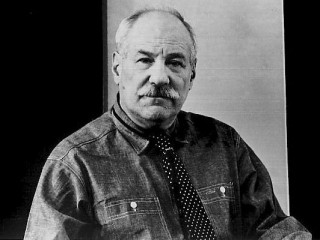
Barnett Newman biography
Date of birth : 1905-01-29
Date of death : 1970-07-03
Birthplace : New York City, New York, US
Nationality : American
Category : Arts and Entertainment
Last modified : 2011-01-05
Credited as : Artist painter, ,
The American painter Barnett Newman was a central figure among color-field abstractionists between 1950 and 1970.
Barnett Newman was born in New York City on Jan. 29, 1905. Between 1922 and 1926 he studied with Duncan Smith, John Sloan, and William von Schlegell at the Art Students League and at the same time attended the City College of New York, where he received a bachelor of arts degree in 1927. He did graduate work at Cornell University. In 1936 he married Annalee Greenhouse, and in 1948 he and William Baziotes, Robert Motherwell, and Mark Rothko founded a school of art in New York called "Subjects of the Artist." Throughout his life Newman traveled extensively in the United States, Canada, and Europe. He also taught occasionally: at the University of Saskatchewan in 1959 and at the University of Pennsylvania in 1962-1964. He died in New York City on July 3, 1970.
During most of his career Newman shunned one-man exhibitions, preferring to have his work seen by a small group of friends, patrons, and fellow artists. His list of oneman shows is therefore limited to five. By the 1960s Newman's stature in the field of contemporary painting became increasingly apparent to a wider audience. His work was included in a number of national and international group shows, including the Seattle World's Fair (1962), the São Paulo Bienal (1965), and the Metropolitan Museum of Art's "New York Painting and Sculpture, 1940 to 1970" (1969-1970).
Criticism of Newman's work has shifted recently. During the 1950s he was generally regarded as an abstract expressionist and was linked with artists as diverse as Jackson Pollock, Willem de Kooning, Mark Rothko, Franz Kline, and Robert Motherwell. This link was in part justifiable: in addition to being a member of the abstract expressionist generation, Newman was that group's spiritual ally in its struggle to gain recognition for its new and often radical work.
More recently, Newman's art has been associated with a younger generation of painters, including Jules Olitski and Kenneth Noland. In this case the association is based on the fact that Newman's work consistently eschewed the painterly expressiveness of artists such as De Kooning or Kline. Like his younger counterparts, Newman seems to have been most concerned with generating pictorial space through color alone rather than through violent or explosive brushwork.
In Newman's best paintings, such as Cathedra (1950-1951) and Vir heroicus sublimis (1950-1951), the imagery consists of a single field of color that is inflected by one or two thin vertical bands. But the paint is applied with light, feathery brushstrokes that blend softly into one another and nowhere permit the barest sensation of tactile pigmentation. His rich pictorial space is created through varying densities of a particular color rather than through lines or discrete shapes. In this sense, his paintings are purely optical and eschew the perceptual values of objects or spaces in the world outside of painting.
For Newman's position within contemporary art see Michael Fried, Three American Painters (1965), and Thomas B. Hess, Barnett Newman (1969). An essay by one of Newman's early champions is "Barnett Newman: The Living Rectangle" in Harold Rosenberg, The Anxious Object: Art Today and Its Audience (1964).
















